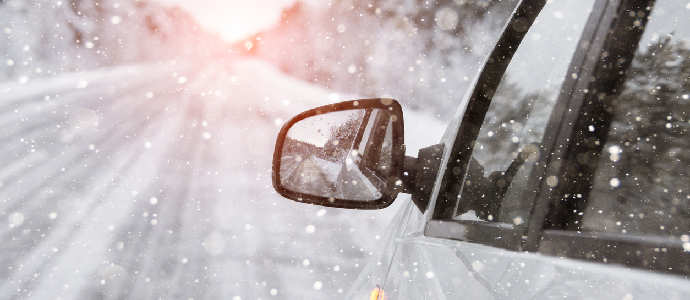Natives in North Dakota and throughout the Midwest understand the dangers of black ice all too well. This thin coating of ice on highways, bridges, and throughout parking lots is an annual occurrence and routinely puts people at risk of a serious collision.
However, those who are not familiar with this driving condition or are just learning to drive may not know that there are things you should and should not do when driving on ice. Here’s what you need to know.
What to Do When Driving on Ice
Accelerate and Decelerate Gently: When driving on ice, accelerating or decelerating too quickly can cause your car to lose traction. Instead, use a gentle acceleration and deceleration style when you’re driving to ensure that you maintain control of the vehicle.
Maintain a Safe Speed: When driving on ice, your speed should always be lower than normal. Driving too fast makes you more likely to lose control of the vehicle in inclement weather, leading to dangerous situations.
Leave Extra Room Between You and Other Cars: It’s essential to leave extra space between you and other cars when driving on ice. This will give you more time to brake and react if the other driver skids out of control.
Avoid Sudden Movements: When driving on ice, you should do your best to avoid sudden movements to maintain control of the car. This means avoiding abrupt turns and stops, which can cause your vehicle to slide or spin out of control.
What Not to Do When Driving on Ice
Don’t Slam on the Brakes: When driving on ice, slamming on the brakes can cause your car to skid and lose control. Instead, use gentle braking techniques when coming to a stop.
Don’t Make Aggressive Turns: Making aggressive turns while driving on ice is never a good idea, as it can cause your car to slip and slide out of control. To be safe, turn the wheel slowly and gradually when driving on ice.
Don’t Tailgate: On roads covered in ice, tailgating is risky and should be avoided at all costs. You need enough time to react if the other driver skids out of control, and tailgating prevents you from having that extra time.
Ultimately, when driving on ice-covered roads, it’s important to stay alert, remain calm, and practice patience. Taking things slowly and responding gently will help you keep your car in control and avoid a dangerous accident.
Even in inclement weather conditions, motorists should take care when on the roads; not doing so can put everyone at risk. Pringle & Herigstad, P.C. can help you hold negligent individuals accountable for their risky behaviors causing your injury. Call (855) 245-5100 to schedule a free consultation today.
